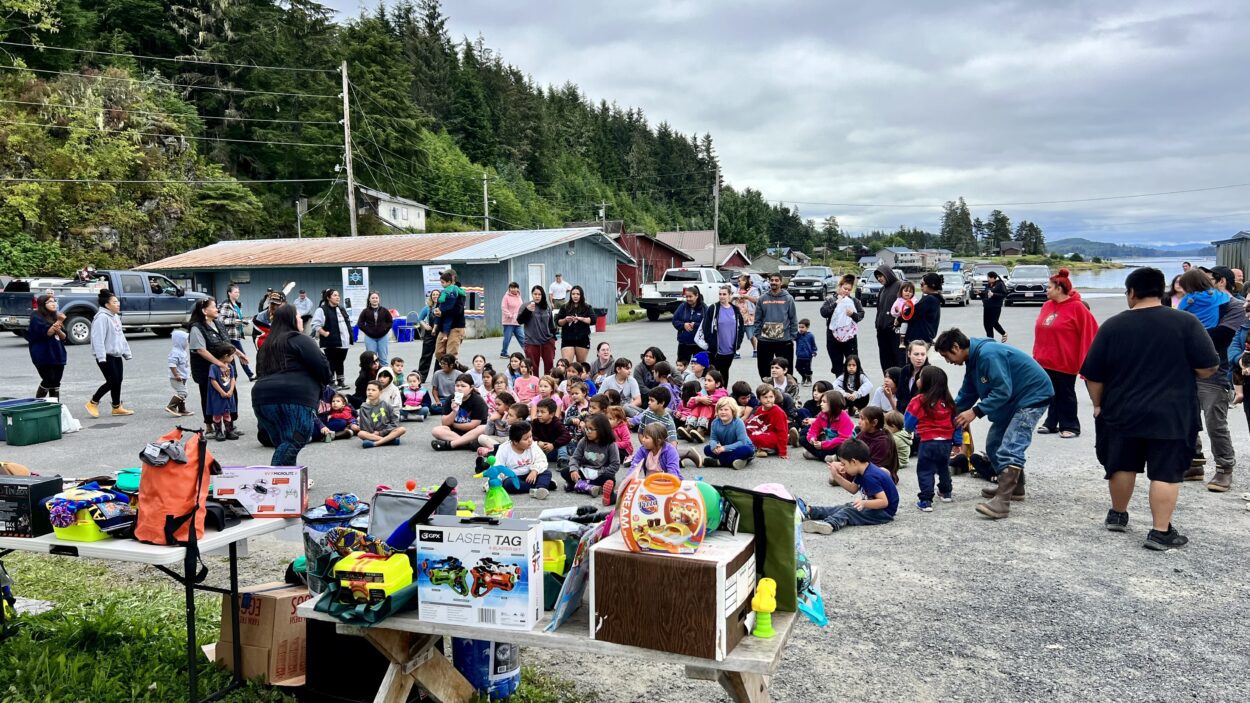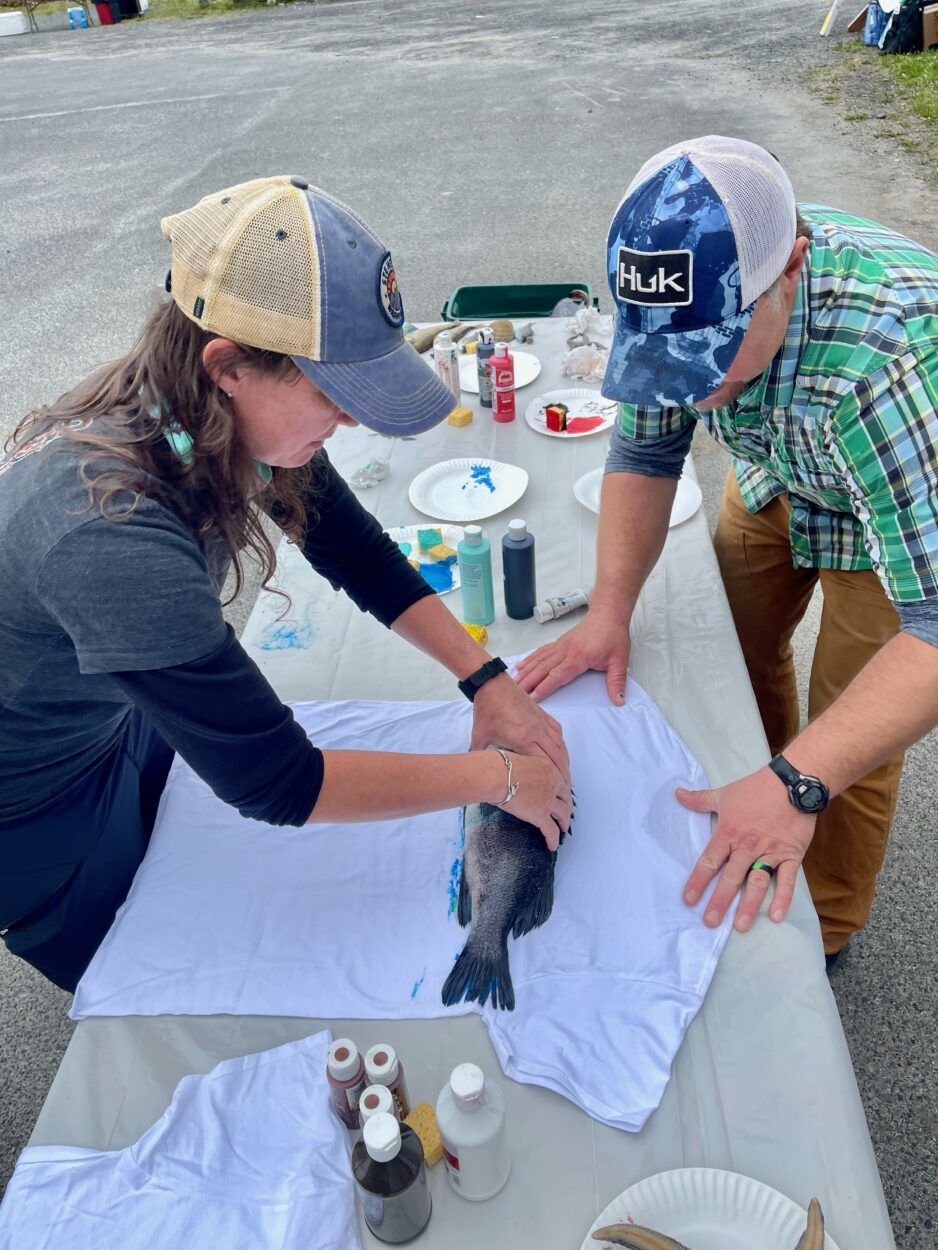
A group of U.S. Forest Service personnel from the Petersburg Ranger District traveled to Kake late last month to help put on the annual Children’s Fishing Derby, where local youth practiced catching and identifying fish with the visiting scientists.
Many communities across Southeast Alaska hold salmon fishing competitions in the summer. But Petersburg’s king salmon derby pulled the plug in 2018, on account of historically low king returns to Southcentral-Southeast rivers. But on the other side of Kupreanof, Kake’s annual children’s fishing derby is still swimming strong — even in spite of some new challenges.
This year, the derby got pushed back by a few weeks due to a COVID-19 outbreak. And it was organized by a much smaller group than previous years. The delay pushed the event just out of reach for the Alaska Youth Stewards, who usually come to help out. Eric Castro is a U.S. Forest Service fish biologist with the Petersburg Ranger District, and he’s helped organize the event for several years. Even though the teen interns couldn’t make it this year, Castro credited them with the long term success of Kake’s fishing derby.
“The last few years, we’ve relied upon the Alaska Youth Stewards,” said Castro. “[They have] really been essential in helping our events mature and become assimilated a little bit more into the community. We’ve always had a great response from the community and the elders. But I feel that there’s even a stronger affinity toward it when we started encompassing the Kake youth into it.”
The derby is a collaboration between the Organized Village of Kake, Kake Tribal Corporation, the U.S. Forest Service, and several other community entities and nonprofits. Local businesses and private citizens donated prizes for the event, like dry bags and fishing rods. Danielle MacPhee is a biological technician who staffed the event — it was her first time coming out. She said she noticed the kids certainly had their preferences.
“I will say all the Barbie fishing rods went quick — Barbie was a hot commodity!” said MacPhee.
The organizers also brought some very unique arts and craft supplies with them. Part of MacPhee’s job was helping the kids paint t-shirts — using dead fish.
“So there were some black rock fish and a pink salmon,” said MacPhee. “Then my coworker and I went out in the morning and found some starfish and sea shells and some other things, so they could use that on their on their t-shirt. We have this permanent fabric paint, and they can choose what kind of fish or creature they want to put paint on — then you just roll it on the t-shirt. A lot of it turns into hand painting and fingerprint stuff.”

(Photo courtesy of Eric Castro)
However, the derby is also about education — staff helped identify all the species the kids brought in. MacPhee said they caught a huge variety of fish that day. And they were pretty resourceful about it.
“Some kids were out on boats, some kids were fishing from the dock,” said MacPhee. “[Then] some of them went up river and caught some cutthroat and Dolly Varden and brought those in.”
Castro kept a detailed spreadsheet of all the fish the kids caught — and of every single contest category.
“We had the heaviest, longest, smallest, and most interesting — not the ugliest… It was the most interesting!” Castro insisted.
The largest fish, which netted the grand prize, was a 6.86 pound coho. Castro said the “most interesting” — not the ugliest — category is meant to be a catch-all, for when the kids reel in something really special.
“It’s something where you get a kid fishing off the dock, and he pulls up a boot off the bottom of the sea floor,” said Castro. “…And he turns it in, and it’s like — ‘gosh, that’s interesting.'”
However, this year’s most interesting fish wasn’t a boot. It was… a six inch eel.
“I’m not certain how that eel was captured, but it was alive… and [the kids] intended on going and releasing it,” said Castro. “So, that was pretty interesting!”
In spite of all the challenges up front, Castro said he feels grateful for the opportunity to come out for another youth fishing derby.
“It’s just a reminder of this wild place that we live in and how amazing it is,” said Castro. “We’re actively trying to increase community involvement between Petersburg and Kake. And then, ancillary, to be able to enjoy the benefits of the great outdoors.”
Castro thanks the other groups that accompanied Petersburg Ranger District personnel to Kake, which included staff from Salmon State, the Indigenous Sentinels Network, and the Skipper Science Partnership.










